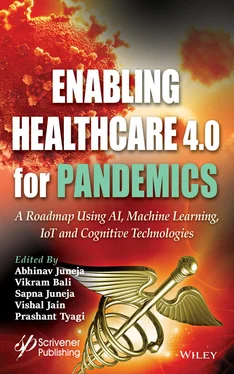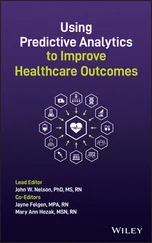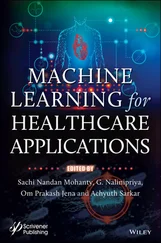2.4 Opportunities and Limitations
HCS 4.0 techniques would offer innovative digital interventions during everyday living in the crisis [38]. For example, evaluating risk worldwide, planning public health emergency actions against COVID-19, producing the protective equipment and delivering timely medical supplies via the intelligent supply chain, using robots in caring for infected patients and reducing the risk of exposure to infection among healthcare providers, training staff using virtual reality, supporting more adaptable healthcare setting, performing everyday living activities in the lockdown, and detecting misinformation in the different media channels [6].
The speed and scale of the COVID-19 pandemic is more or less ahead of the health systems of all countries. Diagnosing, maintaining, treating, and tracking people with suspected infections has become physically difficult because existing healthcare systems based on a historically necessary model of interaction between patients and their physicians have facilitated viral transmission. Globally, several governments have realized the need of an immediate digital revolution to counter this. Therefore, countries around the world have had to take steps to transform healthcare and expand it through the power of digital technology. Unfortunately, even in the developed world, where telemedicine has existed for decades, it has had a weak penetration of the services market, due to rigid, unresolved regulatory mechanisms. With the advent of the pandemic of COVID-19, several countries, including the US, repealed all provisions restricting remote and telemedicine services and began to actively implement it in healthcare.
In turn, prolonged and improper use of various trackers and mobile applications for smartphones can cause users side effects such as neck pain, elbows, upper back, shoulder girdle, and numbness in both fingers and hands. It is worth noting that long-term use of smartphones contributes to the development of a specific syndrome of “Text neck”, which is accompanied by pain and curvature in the cervical spine. In addition, long-term use of smartphones and tablets contributes to the appearance of such unpleasant phenomena as: “smartphone”, “selfie-wrist”, “self-elbow”, “computer hump”. “Click finger”, “Cell phone-elbow”.
The development of tools for prevention, early diagnosis and forecasting based on the use of DL and ML with the involvement of IoT technologies and AI requires a huge amount of quality data. The key word—Quality! In order for these technologies to be able to generate qualitative conclusions, they must learn from qualitative and sufficient examples. After all, bad results would be obtained while training models on non-representative data. Unfortunately, data sets of medical images and textual analysis are limited in comparison to the needs of in-depth training. Many of them are not digitized in real time, or contain errors. The key cause of the shortage of collected data is their usual incompatibility in different geographical regions, poor accessibility of the population to medical facilities in developing countries.
HCS 4.0 techniques could offer disruptive innovations, mitigating the COVID-19 crisis. They are expected to grow, storing health-related data on COVID-19 to be used for similar pandemics. Such technologies could rapidly be applied by healthcare providers in managing COVID-19 or similar pandemics, hence making a smarter health system. However, upgrading the current software infrastructure and devices is required. Of course, the industry of trackers and smartphones with the latest applications can help in part. But in developing them, manufacturers must take into account elements like minimal expanses, constrained consumer resources, access for illiterate or disabled subject, and support for several languages to be effectively adopted in different areas. To overcome these limitations, we must apply analytical approach and critical thinking.
Thanks to the active use of AI-based robotics, contactless drug delivery and remote treatment of patients has been made possible, reducing the need for medical personnel to contact infected people. AI can also predict the risk of serious COVID-19-related illnesses for people of all ages and take proactive measures to halt the virus transmitting to vulnerable groups. Thus, the analysis of the literature showed how AI, advanced mathematical modeling, ML, and cloud computing could expect the epidemic growth, and how the future state of global health depends on their coordinated and high-quality work.
HCS 4.0 applies sensors that are connected wirelessly with a system to display and monitor the entire intelligent manufacturing processes, for example, designing and producing the needed medical disposables and equipment to meet the gap caused by the COVID-19 crisis through an intelligent supply chain for timely and effective patient care. HCS 4.0 includes intelligent, adaptable systems that operate timely with data provided by AI, IoT, and other automatic techniques. HCS 4.0 provides digital solutions for unique areas, for example, different production and automatic information techniques for gathering, sharing, storing, exploring, and adequately monitoring health-related data. Such innovative techniques could properly isolate infected patients, decreasing death rates, speeding up developing drugs, managing procedures, and care. With the help of such techniques, individuals could work virtually from homes; identifying novel working environments. HCS 4.0 could function distantly via intelligent technologies for fighting the COVID-19 pandemic. Such a revolution speeds up the digital transformation with enhanced public safety through virtual clinics that apply remote monitoring and telemedicine consultations, hence, decreasing patients’ physical crowding in healthcare facilities. This chapter discussed applying HCS 4.0 techniques in managing the COVID-19 pandemic.
1. Ienca, M. and Vayena, E., On the responsible use of digital data to tackle the COVID-19 pandemic. Nat. Med ., 26, 4, Art. no. 4, Apr. 2020.
2. Manogaran, G., Thota, C., Lopez, D., Sundarasekar, R., Big Data Security Intelligence for Healthcare Industry 4.0, in: Cybersecurity for Industry 4.0: Analysis for Design and Manufacturing , L. Thames, and D. Schaefer, (Eds.), pp. 103–126, Springer International Publishing, Cham, 2017.
3. Zeng, J., Huang, J., Pan, L., How to balance acute myocardial infarction and COVID-19: the protocols from Sichuan Provincial People’s Hospital. Intensive Care Med ., 46, 6, 1111–1113, 2020.
4. Ruan, Q., Yang, K., Wang, W., Jiang, L., Song, J., Clinical predictors of mortality due to COVID-19 based on an analysis of data of 150 patients from Wuhan, China. Intensive Care Med ., 46, 5, 846–848, 2020.
5. Haleem, A., Javaid, M., Vaishya, R., Industry 4.0 and its applications in orthopaedics. J. Clin. Orthop. Trauma , 10, 3, 615–616, Jun. 2019.
6. Haleem, A. and Javaid, M., Additive Manufacturing Applications in Industry 4.0: A Review. J. Ind. Integr. Manage ., 04, 04, 1930001, Aug. 2019.
7. Javaid, M., Haleem, A., Vaishya, R., Bahl, S., Suman, R., Vaish, A., Industry 4.0 technologies and their applications in fighting COVID-19 pandemic. Diabetes Metab. Syndr ., 14, 4, 419–422, 2020.
8. Alloghani, M., Al-Jumeily, D., Hussain, A., Aljaaf, A.J., Mustafina, J., Petrov, E., Healthcare Services Innovations Based on the State of the Art Technology Trend Industry 4.0, in: 2018 11th International Conference on Developments in eSystems Engineering (DeSE) , Sep. 2018, pp. 64–70.
9. Fisher, D. and Wilder-Smith, A., The global community needs to swiftly ramp up the response to contain COVID-19. Lancet Lond. Engl ., 395, 10230, 1109–1110, 04 2020.
Читать дальше












